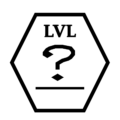“A victory condition is also known as how to win. There are many mechanisms that a game will use to determine the end state, and for the more narrative heavy games, these become more obscured, and less quantified as far as the player is concerned. This is usually not the case from the designer’s perspective.
Many games of the 80s had no finish condition, where it would say the game is complete. For example, in Pac-Man there is no final level that will reward you with a “You Win” screen. The game does, of course, famously artifact at level 256 when one of the 8-bit variables turns over, making the level impossible to pass. This still results in nothing more than the standard “Game Over”, and a high score. Interestingly enough, with Pac-Man, there is a maximum high score. But the point is that some games do not have victory conditions. These games simply have a loss condition that reports your quantitative skill as score. This was easier to program for at the time they were developed, given the severe memory constraints.”
Victory conditions. (n.d.). Retrieved February 06, 2021, from https://gamemechanics.fandom.com/wiki/Victory_conditions#
